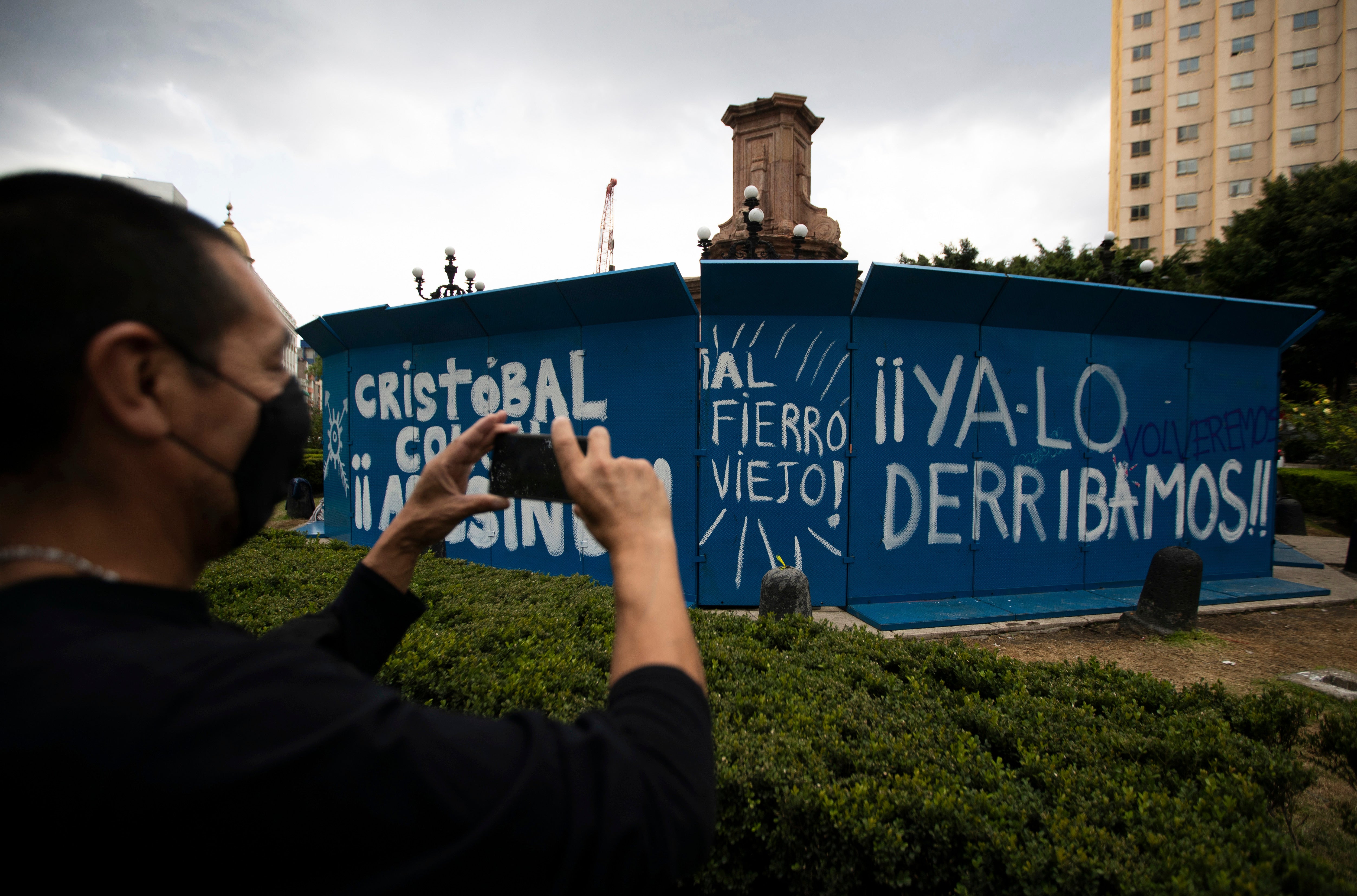Mexico's marks Columbus Day without statue of Columbus
Mexicans have never had much affection for Cristopher Columbus, and officials are being coy about why his statue was removed from the capital’s main boulevard over the weekend before observances of Columbus Day — a day that saw protests in several Latin American nations

Your support helps us to tell the story
From reproductive rights to climate change to Big Tech, The Independent is on the ground when the story is developing. Whether it's investigating the financials of Elon Musk's pro-Trump PAC or producing our latest documentary, 'The A Word', which shines a light on the American women fighting for reproductive rights, we know how important it is to parse out the facts from the messaging.
At such a critical moment in US history, we need reporters on the ground. Your donation allows us to keep sending journalists to speak to both sides of the story.
The Independent is trusted by Americans across the entire political spectrum. And unlike many other quality news outlets, we choose not to lock Americans out of our reporting and analysis with paywalls. We believe quality journalism should be available to everyone, paid for by those who can afford it.
Your support makes all the difference.Mexicans have never had much affection for Cristopher Columbus, and officials were being coy about why his statue was removed from the capital's main boulevard over the weekend before Monday's observances of Columbus Day, which saw protests in several Latin American nations.
Unlike in other cities where monuments to the 15th century explorer have been toppled by protesters, in Mexico City the 19th century bronze statue was gently lifted off its pedestal with a crane and taken away for restoration. But leaders danced around the question of when, or whether, it would return.
President Andrés Manuel López Obrador said it was just a coincidence it was removed just before the anniversary of Columbus' arrival in the Americas — known in the Spanish-speaking world as “Día de la Raza.” In past years, leftist and indigenous groups have spray-painted the statue on Oct. 12, as well as during many other protests, and had appeared likely to do so again this year.
“As far as I know, they took the statue down to restore it. And, yes, it did coincide with today's date, but that should not be misinterpreted.” López Obrador said, while acknowledging “it is a date that is very controversial and lends itself to conflicting ideas and political conflicts.”
In Mexico's western state of Michoacan, a coalition of largely Purepecha communities marked Monday by blocking roads leading into their territories and issued a statement saying that “we were not ‘discovered’... our lands were invaded and looted, not discovered.”
Elsewhere in the region, an unauthorized march in support of Chile's biggest Indigenous group, the Mapuche, erupted into clashes when police attempted to stop the demonstration. The Mapuche long resisted the Spanish conquerors, and later the Chilean government, and the march is held annually to bring attention to their plight and reiterate their claims to recover ancestral lands.
In Bolivia, protesters painted a statue of Columbus red to symbolize the blood of Indigenous peoples and also dressed a statue of Queen Elizabeth I in the clothes of an Indigenous Chola woman during demonstrations on what is known there as “Decolonization Day.”
In Mexico, López Obrador both rails against the conquest and has a keen appreciation of history, asking Mexicans “not to take their anger out on statues.” He again demanded over the weekend that Spain and the Roman Catholic Church apologize for abuses committed during the conquest of Mexico in the 1500s, though Spain already refused to apologize in 2019.
The National Institute of Anthropology and History, which oversees such monuments, said only that “the date for returning the statue will de determined by the Mexico City government” once restoration work is completed. There is one other smaller statue of Columbus in the capital, but it is in a little-visited median strip.
Mexico City Mayor Claudia Sheinbaum declined to say much about the statue's fate.
“Maybe now that it is being restored and all, it would be worth while reflecting on what it represents,” she said.
On whether the statue should be put back, Sheinbaum said: “I am not saying no, I am not saying yes. I do not even think the mayor should make that decision alone; I think a debate should be opened.”
She also brought up the question of whether streets in the city should continue to bear the names of brutal Spanish conquistadores like Pedro de Alvarado, one of Hernán Cortes' officers blamed for a massacre of people in Tenochtitlan, the Aztech capital that became Mexico City. A stretch of the Mexico-Tacuba causeway, one of the oldest streets in the Americas, bears the name “Puente de Alvarado” after the conquistador.
“I think it would be worthwhile for historians and the public and everybody to reflect on that, in light of next year,” Sheinbaum said — 2021 is the 700th anniversary of the founding of Tenochtitlan, the 500th anniversary of its fall to Cortes, and the 200th anniversary of the victory of Mexico's 1810-1821 independence struggle against Spain.
Most Mexicans have some indigenous ancestry and are keenly aware that during and after the conquest millions of Indigenous people died from violence and disease.
“I don’t agree with having that kind of monument on the streets because I think they represent oppression,” Viridiana Chacon, a marketing specialist, said Saturday as she passed by the empty base where the statue stood.
On Saturday, López Obrador published an open letter to Pope Francis saying, “The Catholic Church, the Spanish monarchy and the Mexican government should make a public apology for the offensive atrocities that Indigenous people suffered."
Subscribe to Independent Premium to bookmark this article
Want to bookmark your favourite articles and stories to read or reference later? Start your Independent Premium subscription today.